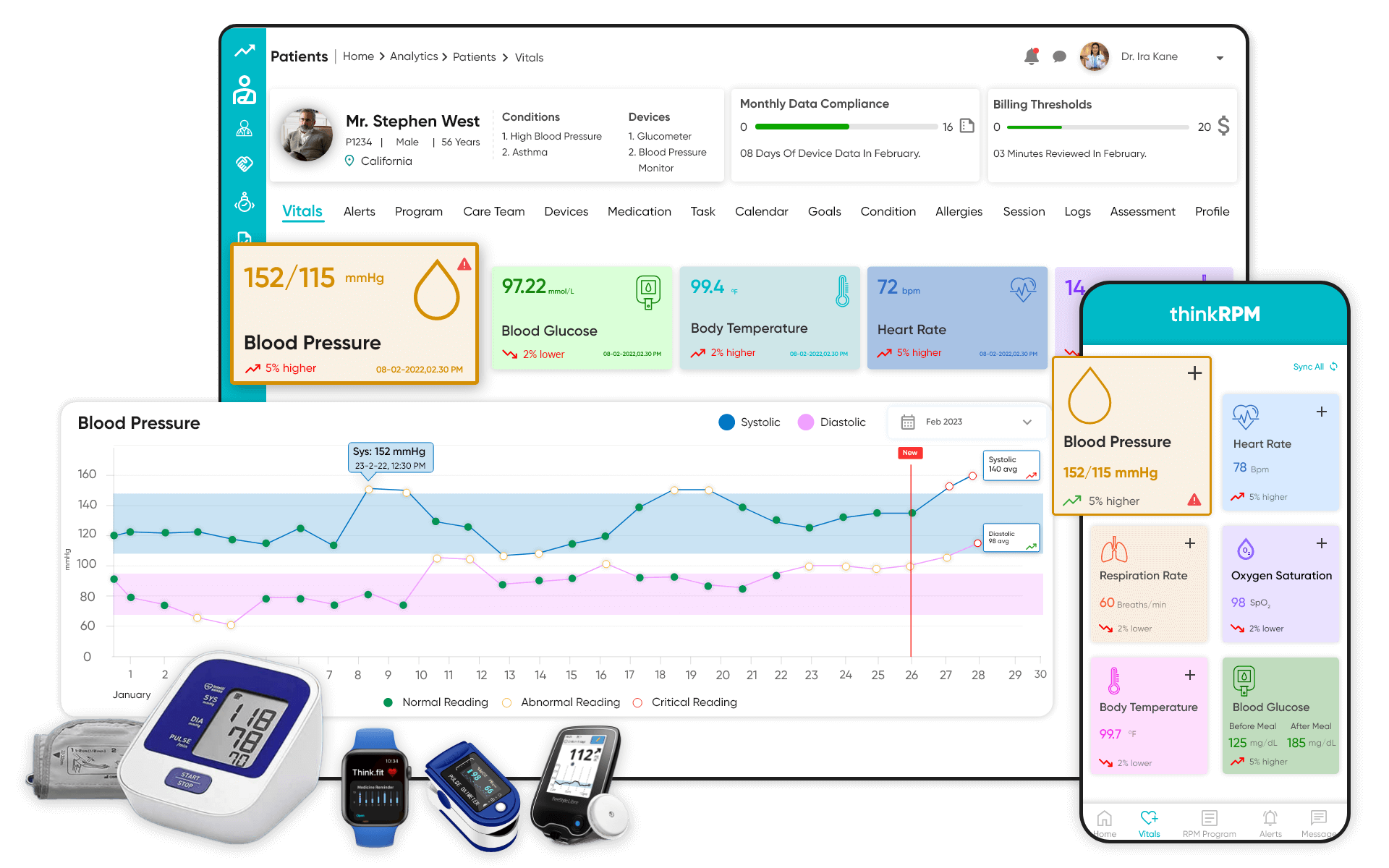User-Friendly Software for Remote Patient Monitoring: Easy Combination and Use
User-Friendly Software for Remote Patient Monitoring: Easy Combination and Use
Blog Article
The Future of Medical Care: Remote Individual Checking Streamlined
As healthcare proceeds to advance, one location that holds enormous pledge is remote patient tracking. The idea of streamlining this procedure via technical improvements is improving the means care is supplied and received. With a focus on boosting client outcomes and streamlining health care shipment, remote tracking is positioned to change the sector. By discovering the benefits, technical innovations, and future trends in this field, we can gain important insights into the transformative potential of remote client tracking.
Benefits of Remote Individual Tracking
Remote person tracking offers a wide range of advantages for both health care service providers and patients alike. Furthermore, remote client surveillance improves the overall top quality of care by providing an extra all natural and detailed view of individuals' health and wellness status past standard in-person brows through.
Moreover, remote client monitoring can lead to enhanced patient end results and satisfaction. Remote surveillance can minimize the requirement for frequent hospital visits, decreasing health care costs for both people and carriers.
Technology Driving Remote Tracking
In the realm of modern-day health care, technological innovations play an essential role in driving the advancement and efficiency of remote patient tracking. The integration of ingenious technologies such as wearable devices, mobile applications, and cloud-based systems has reinvented the way doctor remotely handle and check individual health - remote patient monitoring software. These modern technologies allow continuous real-time surveillance of important signs, drug adherence, and various other crucial wellness data, permitting timely treatments and customized care plans
One trick innovation driving remote surveillance is the Internet of Points (IoT), which makes it possible for smooth connectivity between medical gadgets and medical care systems. IoT tools such as smartwatches and wireless sensing units send and collect person data to centralized systems, helping with remote monitoring from throughout the globe. Synthetic intelligence (AI) and maker knowing formulas additionally boost remote surveillance by assessing vast amounts of client data to spot patterns, forecast health and wellness patterns, and sharp doctor to potential issues.
Effect On Healthcare Distribution
With the assimilation of innovative innovations driving remote individual tracking, the effect on health care delivery is becoming increasingly profound and transformative. Remote person tracking enables doctor to use more tailored and aggressive treatment to clients, leading to boosted health and wellness outcomes and lowered hospital admissions. By from another location tracking important signs, signs, and medication adherence, medical care experts can intervene early, protecting against issues and enhancing the total high quality of care.
Moreover, remote surveillance improves access to health care services, specifically for individuals in underserved or rural locations. Individuals can get constant monitoring and support from their homes, getting rid of the need for frequent in-person check outs. This not just saves time and reduces expenses for both individuals and healthcare facilities yet also lessens the threat of exposure to contagious conditions, a vital consideration in the present medical care landscape.
Additionally, remote individual surveillance enables doctor to far better assign sources and prioritize treatment based on real-time information. By determining risky patients and stepping in immediately, healthcare shipment comes to be more effective and Going Here effective, inevitably resulting in a much more lasting and patient-centered healthcare system.
Improving Client Results

In addition, RPM allows for positive monitoring of chronic conditions, minimizing the likelihood of severe exacerbations and healthcare facility readmissions. People gain from boosted benefit and comfort, as they can obtain treatment in their own homes while staying attached to their health care companies. This constant monitoring not just improves client satisfaction yet likewise fosters a feeling of empowerment and interaction in their own wellness administration.
Future Trends in Remote Monitoring
Embracing innovative modern technologies in remote patient tracking is forming the future landscape of medical care delivery. One considerable pattern is the raised use of wearable gadgets and sensors to gather real-time information, enabling healthcare companies to check patients continuously without the demand for frequent in-person check outs.

Moreover, telehealth systems are coming to be more advanced, enabling for digital consultations, remote diagnosis, and remote client checking all in one integrated system (remote patient monitoring platform). This holistic technique to remote surveillance is streamlining healthcare shipment, boosting person satisfaction, and eventually, click this enhancing overall quality of care
Final Thought
To conclude, remote client surveillance supplies numerous advantages in health care delivery, driven by improvements in modern technology. It has the possible to boost patient results and reinvent the means medical care is supplied. Future go to my site trends in remote tracking will certainly remain to shape the landscape of health care, supplying chances for more individualized and reliable person treatment.
Remote individual tracking presents a multitude of advantages for both health care carriers and people alike. Furthermore, remote client monitoring enhances the total high quality of care by offering a more holistic and thorough view of patients' wellness condition beyond traditional in-person visits.
Moreover, remote person tracking can lead to improved individual results and contentment. Remote person tracking permits health care service providers to offer more aggressive and customized care to patients, leading to boosted health and wellness outcomes and reduced healthcare facility admissions. Remote client surveillance (RPM) plays a substantial function in boosting client end results by supplying continual, real-time information that enables health care service providers to step in without delay and adjust treatment plans as required.
Report this page